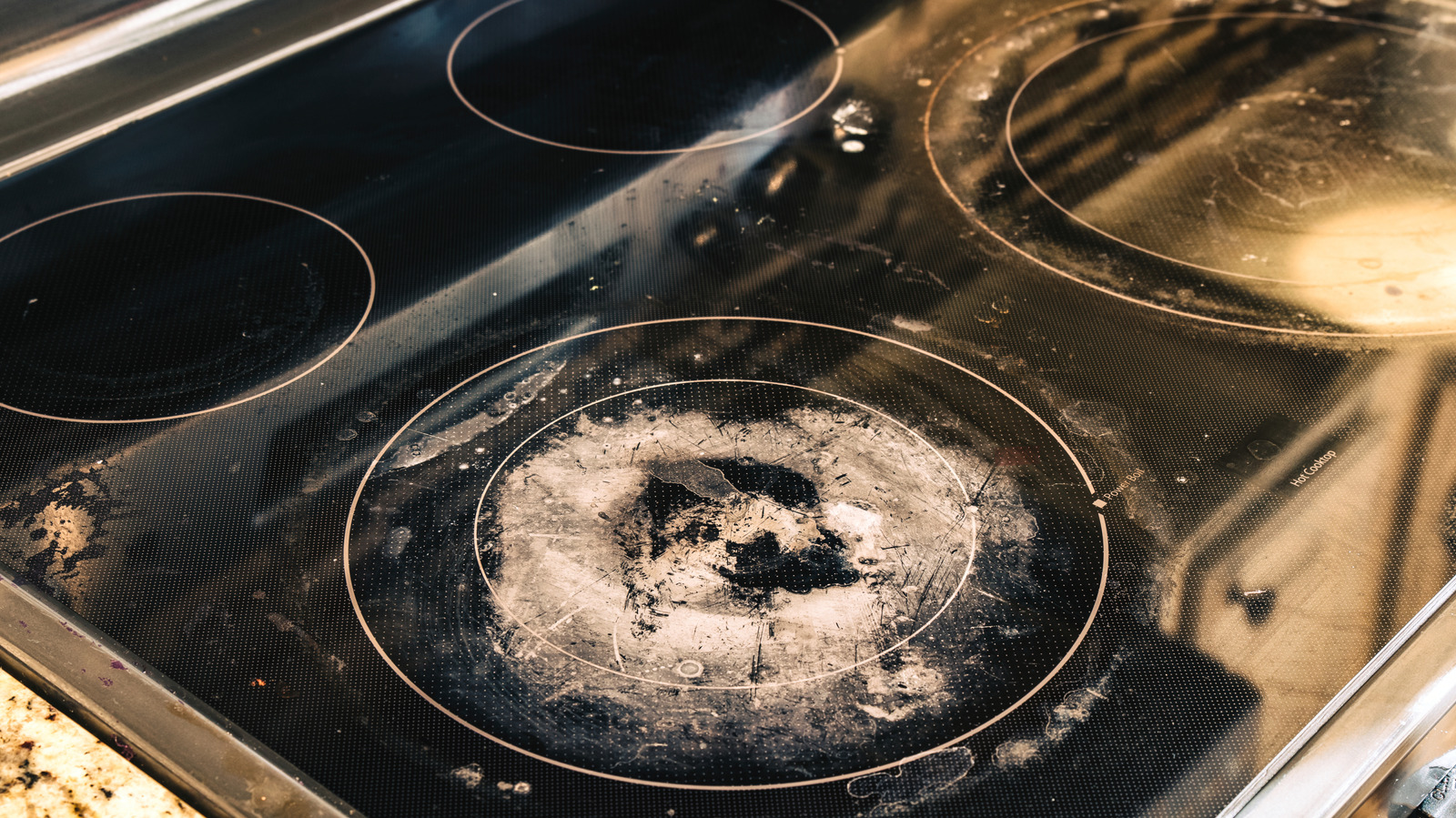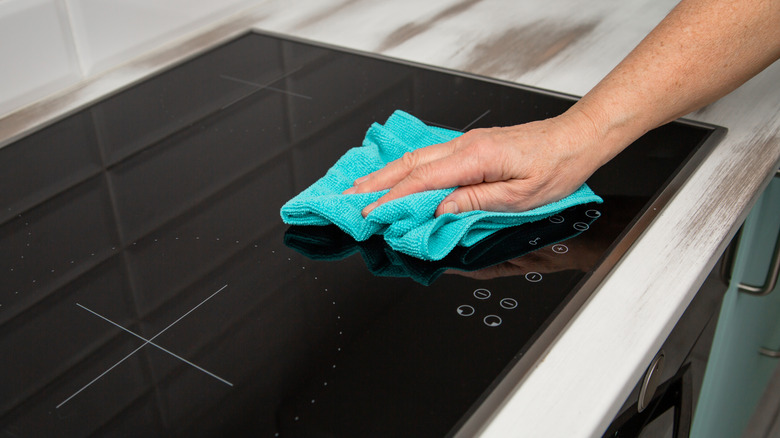Let’s set the scene. You’re stirring a pot of boiling pasta and pull the spoon out, dribbling water around the pot. You go about making dinner, but after cleaning everything up, notice white stains all over your shiny glass cooktop. Now, your first inclination might be to grab a sponge and scrub them off but using cleaning agents that are extremely caustic in combination with abrasive sponges can actually damage your stovetop more by scratching it. Don’t panic, though! There is an easy way to get rid of those pesky, burned-on water stains.
For light water stains, a good spritzing with vinegar might be enough to remove them. For tougher stains, look to tried-and-true baking soda. Not only can it help your baked goods rise, but baking soda can clean your oven and your electric stovetop. This is because baking soda can break down residue, while its mildly abrasive properties help gently scrub away stains and grease. For water stains, there are two ways you can use baking soda. You can make it into a paste and let it sit before scrubbing it or sprinkle it on and use soap and hot water to lightly scrub it away. Although many folks recommend using baking soda and vinegar, this is actually something you should avoid because the two basically cancel each other out.
Now, if the stains are proving particularly troublesome, you might consider using something like Cerama Bryte, a cleaner designed for electric stovetops. For water stains that have been left to bake for a long time, a cleaner like this can make removing them much more manageable.
How to prevent getting water stains on your stovetop
Glass stovetops can be challenging to keep squeaky clean, but regular cleaning after spills is the best way to keep water from leaving stains. Unfortunately, this can be tricky when the stove is hot, so you’ll need to be careful and take measures to prevent as many splashes and overflows as possible.
If boiling over is your leading cause of water stains, consider using larger pots, stirring your dishes more frequently, or using a smaller burner so the heat is more concentrated at the center of your pot. Alternatively, if you’re prone to splashing water around after stirring something, try using a silicone spoon rest that you can easily hold near your pot to catch any drips before they can hit your stove.
It pays to be careful when you have an electric stovetop, but just like a gas stovetop, frequent cleaning is the key to helping it look its best. The less time water has to burn onto your stove, the easier it will be to clean. So, don’t leave it to sit there and bake. Future you (and your stove) will be grateful.





